Research

The Kaiser Permanente Los Angeles Medical Center Comprehensive Stroke Center is committed to provide the highest quality of care. We are dedicated to advancing treatments and discovering potential new therapies to improve outcomes for neurological conditions. Leading edge care begins with research.
Clinical trials are research studies that evaluate a new medical approach, device, drug, or other treatment. Patients who seek medical care at our center will be offered the opportunity to participate in an available clinical trial for which they qualify.
Open trials refer to studies currently accepting participants.
Closed trials are not currently enrolling but have been recently completed.
Ongoing studies:
A Randomized Controlled Trial to Optimize Patient’s Selection for Endovascular Treatment in Acute Ischemic Stroke (SELECT-2)
PI: Dr. Navdeep Sangha
SELECT-2 evaluates the efficacy and safety of endovascular thrombectomy compared to medical management alone in acute ischemic stroke patients due to a large vessel occlusion in the distal ICA and MCA M1 who have large core on either CT (ASPECTS: 3-5) or advanced perfusion imaging ([rCBF<30%] on CTP or [ADC<620] on MRI: ≥50cc) or both and are treated within 0-24 hours from last known well. The second aim is to look at the correlation of imaging profiles with thrombectomy clinical outcomes and treatment effect. This will be evaluated by comparing the outcomes in patients with discordant imaging profile and assessing if thrombectomy outcome rates and treatment effect will differ in patients with discordant imaging profiles (favorable CT/unfavorable perfusion imaging and unfavorable CT/favorable perfusion imaging).
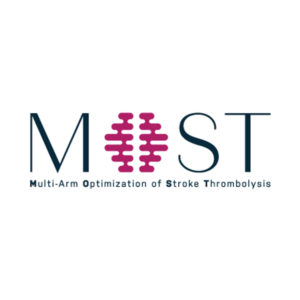 |
Multi-arm Optimization of Stroke Thrombolysis (MOST): a blinded, randomized controlled adaptive, multi-arm, adjunctive-thrombolysis efficacy trial in ischemic strokePI: Dr. Navdeep Sangha This is a three-arm, adaptive, Phase-3, blinded, randomized controlled clinical trial at approximately 110 sites in the United States. The first 150 subjects will be randomized in a 1:1:1 to treatment. From 150-500 patients, response adaptive randomization (RAR) will favor the treatment arm showing the greatest benefit based on accrued data. After 500 patients, one or both intervention arms may be carried forward for fixed randomization versus IV tPA. A maximum of 1200 patients will be enrolled. |
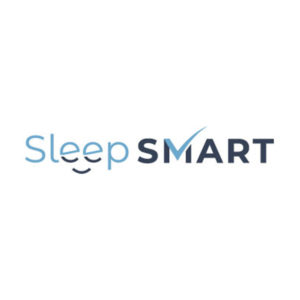 |
Sleep for Stroke Management And Recovery TrialPI: Dr. Prasanth Manthena Sleep SMART has a prospective, randomized, open-label, blinded-endpoint (PROBE) design. This phase 3 multi-site, parallel-group superiority trial compares 6 months of OSA treatment to usual care. The 5-year study includes two trials: a prevention study with an embedded recovery trial. The primary goals of this study are to determine whether treatment of obstructive sleep apnea (OSA) with positive airway pressure starting shortly after acute ischemic stroke or high risk TIA (1) reduces recurrent stroke, acute coronary syndrome, and all-cause mortality during 6 months after the event, and (2) improves stroke outcomes at 3 months in patients who experienced an ischemic stroke. |
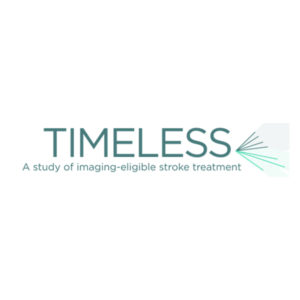 |
A Phase III, Prospective, Double-Blind, Randomized, Placebo-Controlled Trials of Thrombolysis in Imaging-Eligible, Late-Window Patients to Assess the Efficacy and Safety of Tenecteplase (TIMELESS)PI: Dr. Navdeep Sangha This study will evaluate the efficacy and safety of tenecteplase compared with placebo in patients with acute ischemic stroke (AIS). All patients will receive standard-of-care therapy according to American Heart Association / American Stroke Association clinical guidelines (2018). To determine eligibility for randomization, all patients will undergo multimodal CT or MRI at baseline. Only patients with a vessel occlusion (ICA or MCA) and penumbral tissue will be randomized. The primary analysis is to compare the efficacy of tenecteplase versus placebo in all patients at Day 90. |
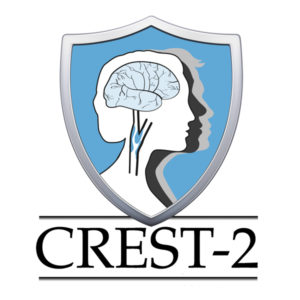 |
Carotid Revascularization and Medical Management for Asymptomatic Carotid Stenosis Trial (CREST-2)PI: Dr. Navdeep Sangha This is a set of two parallel multi-center randomized, observer-blinded endpoint clinical trial: 1) the treatment differences between intensive medical management compared with CEA, and 2) the treatment differences between intensive medical management compared to CAS. Intensive medical management will involve control of blood pressure, LDL cholesterol, cigarette smoking, and other vascular risk factors. |
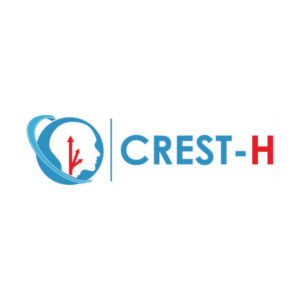 |
Carotid Revascularization and Medical Management for Asymptomatic Carotid Stenosis-Hemodynamics Trial (CREST-H)PI: Dr. Navdeep Sangha This is an ancillary study of the multi-center Phase 3 Outcome-blinded Randomized Clinical trial, CREST-2. |
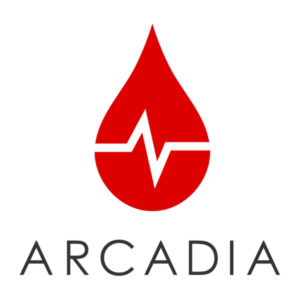 |
AtRial Cardiopathy and Antithrombotic Drugs In prevention After cryptogenic stroke (ARCADIA)PI: Dr. Zahra Ajani ARCADIA is a multicenter, biomarker-driven, randomized, double-blind, active-control, phase 3 clinical trial of apixaban versus aspirin in patients who have evidence of atrial cardiopathy and a recent stroke of unknown cause. 1,100 subjects will be recruited over 2.5 years at 120 sites in the NIH StrokeNet consortium. Subjects will be followed for a minimum of 1.5 years and a maximum of 4 years for the primary efficacy outcome of recurrent stroke and the primary safety outcomes of symptomatic intracranial hemorrhage and major hemorrhage other than intracranial hemorrhage. |
A Phase 2, Multicenter, Randomized, Double-Blind, Placebo-Controlled, Add-On to Standard-of-Care Study of n-Butylphthalide (NBP) Softgel Capsules for Treatment of Mild to Moderate Acute Ischemic Stroke in Adult Subjects (CSPC-NBP-2001)
PI: Dr. Navdeep Sangha
This is a Phase 2 multicenter, randomized, double-blind, placebo-controlled, add-on study of NBP softgel capsules for the treatment of adults aged ≥ 18 years and ≤ 80 who have experienced a mild to moderate cortical or subcortical AIS. The first dose must be taken within 12 hours of the onset of the AIS. Approximately 400 eligible subjects will be randomly assigned at a ratio of 1:1 to receive either placebo or daily NBP 800 mg/day (400 mg BID), assuming that approximately 172 subjects in each group will complete the study. Eligible subjects will participate in the study for 90 days including a 30-day drug treatment period and 60-day follow-up period, or until a discontinuation criterion is met.
SATURN: StATins Use in intracerebral hemorrhage patieNts (Phase III)
PI: Dr. Harsimran Brara
SATURN is a multi-center, pragmatic, prospective, randomized, open-label, and blinded end-point assessment (PROBE) clinical trial. A total of 1,456 patients presenting within 7 days of a spontaneous lobar ICH while taking statins will be randomized to one of two treatment strategies: discontinuation vs. continuation of statin therapy (using the same agent and dose that they were using at ICH onset). Participating subjects will undergo baseline testing for APOE genotype and will be followed for 24 months to assess for the occurrence of recurrent symptomatic ICH or major adverse cerebro-/cardio-vascular events (MACCE) during the follow-up period. (clinicaltrials.gov)
Pivotal study of the MicroVention, Inc. carotid artery stent system used in conjunction with the Nanoparasol® embolic protection system for the treatment of carotid artery stenosis in patients at elevated risk for adverse events from carotid endarterectomy (CONFIDENCE)
PI: Dr. Lei Feng
A prospective, multicenter, single-arm, open label clinical study to evaluate the safety and efficacy of Roadsaver™ carotid stent device used in conjunction with the Nanoparasol® embolic protection system for the treatment of carotid artery stenosis in patients with elevated risk for adverse events following carotid endarterectomy.
ASPIRE: Anticoagulation in Intracerebral Hemorrhage (ICH) Survivors for Stroke Prevention and Recovery
PI: Dr. Harsimran Brara
ASPIRE is a randomized, double-blinded, phase 3 clinical trial designed to test the efficacy and safety of apixaban, compared with aspirin, in patients with a recent intracerebral hemorrhage (ICH) and high-risk non-valvular atrial fibrillation (AF). Seven hundred patients will be recruited at sites coordinated through the NIH/NINDS StrokeNet. Participants will be followed for outcomes over a median of 24 months (12 months minimum, 36 months maximum). Efficacy outcomes are stroke or death (primary) and change in modified Rankin Scale score (secondary). Tertiary outcomes include change in cognition and quality of life, major hemorrhage, myocardial infarction, venous thromboembolism, systemic embolism, and individual components of the primary outcome. (nihstrokenet.org)
ASSIST Registry
PI: Dr. Lei Feng
The purpose of the ASSIST Registry is to assess the procedural success and clinical outcomes associated with various operator techniques for mechanical thrombectomy in large vessel occlusions (LVO). The study population consists of subjects experiencing acute ischemic stroke (AIS) who are eligible for restoration of blood flow using Stryker Neurovascular market-released products in the neurovasculature to remove thrombus. The primary outcome measure is severity of disability at Day 90 assessed by modified Rankin Scale (mRS) with a good functional outcome defined by mRS score.
AMPLATZER™ PFO Occluder Post Approval Study
PI: Dr. Somjot Brar
This is a single arm, multi-center study to confirm the safety and effectiveness of the AMPLATZERTM PFO Occluder in the post approval setting. The clinical study will be conducted at approximately 100 centers in the U.S. and Canada with a minimum of 75 of the 100 centers participating from the U.S. One thousand two hundred fourteen (1214) subjects will be enrolled in the clinical study. The expected duration of enrollment is 3 years. The total duration of the clinical study is expected to be 9 years.
AMPLATZER™ Amulet™ Left Atrial Appendage Occluder Randomized Controlled Trial
PI: Dr. Nigel Gupta
To evaluate the safety and effectiveness of the Amulet device by demonstrating its performance is non-inferior to the commercially available Boston Scientific LAA closure (LAAC) device (Control) in subjects with non-valvular atrial fibrillation. 1:1 between Amulet LAA occlusion device (treatment) and Boston Scientific LAA closure device (Control). 1878 subjects will be randomized at up to 150 sites worldwide. Up to 100 sites in the US may participate.
Past studies:
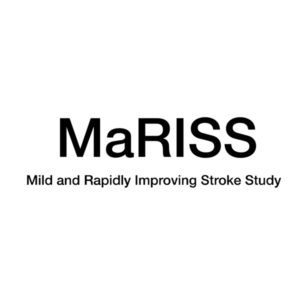 |
Mild and Rapidly Improving Stroke Study (MaRISS)PI: Dr. Navdeep Sangha This is a prospective, observational study to understand the long-term outcomes of patients with mild and rapidly improving stroke symptoms and examine the association with tPA treatment by a telephone-based assessments of stroke. Patients with mild ischemic stroke (NIHSS = or < 5) or rapidly improving stroke symptoms within 4.5 hours from onset will be included. |
Randomized, double-blind, Evaluation in secondary Stroke Prevention comparing the EfficaCy and safety of the oral Thrombin inhibitor dabigatran etexilate (110 mg or 150 mg, oral b.i.d.) versus aspirin (100 mg oral q.d.) in patients with Embolic Stroke of Undetermined Source (RESPECT ESUS)
PI: Dr. Navdeep Sangha
This is a double-blind, randomized, active comparator, event driven phase III superiority trial. Patients with ischemic ESUS (Embolic Stroke of Undetermined Source) within the last 3 months will be included. ESUS is an ischemic stroke that is not lacunar (i.e. due to small artery disease), is not associated with occlusive atherosclerotic stenosis, and does not have a major cardioembolic source, such as atrial fibrillation. It is designed to evaluate recurrent strokes (ischemic, hemorrhagic, or unspecified) with dabigatran etexilate (150 or 110 mg b.i.d.) versus the comparator aspirin (100 mg q.d.).
Platelet-Oriented Inhibition in New TIA and minor ischemic stroke (POINT)
PI: Dr. Zahra Ajani
This study is a prospective, randomized, double-blind, multicenter trial to determine whether clopidogrel 75 mg/day by mouth after a loading dose of 600 mg of clopidogrel is effective in preventing major ischemic vascular events (ischemic stroke, myocardial infarction, and ischemic vascular death) at 90 days when subjects are randomized within 12 hours of time last known free of new ischemic symptoms in patients receiving aspirin 50-325 mg/day (with a dose of 150-200 mg daily for 5 days followed by 75-100 mg daily). Patients with high-risk TIA (ABCD2 score ≥ 4) or minor ischemic stroke (NIHSS ≤3) can be randomized within 12 hours of time last known well.
DWI or CTP Assessment with Clinical Mismatch in the Triage of Wake Up and Late Presenting Strokes Undergoing Neurointervention (DAWN)
PI: Dr. Lei Feng
This is a prospective, randomized, multi-center, Phase II/III (feasibility/pivotal), adaptive, population enrichment, blinded endpoint, controlled trial. The study is evaluating the hypothesis that Trevo (a system to remove clots from the brain) thrombectomy plus medical management leads to superior clinical outcomes at 90 days as compared to medical management alone in appropriately selected subjects experiencing an acute ischemic stroke when treatment is initiate within 6-24 hours after last seen well. The Trevo Retriever will be used beyond the currently labeled 8 hour indicated time limit in wake up strokes, strokes of unclear onset, and late presenting ischemic stroke subjects.
Wingspan StEnt System Post MArket SurVEillance Study (WEAVE)
PI: Dr. Lei Feng
The study is a prospective, single-arm, consecutive enrollment, post market surveillance study to evaluate the rate of stroke and death in patients treated with the Wingspan Stent System, according to the Indications for Use, within 72 hours post procedure. Patients must be with recurrent (2 or more) strokes refractory to a comprehensive regimen of medical therapy and due to atherosclerotic disease of intracranial vessels with 70-99% stenosis. The most recent stroke must have occurred more than 7 days prior to treatment with the Wingspan Stent System.
Prospective, Multi-Center, Single-Arm Study of the Reverse Medical Barrel® Vascular Reconstruction Device (VRD) for Adjunctive Treatment to Embolic Coils for Wide-Neck, Intracranial, Bifurcating/ Branching Aneurysms of Middle Cerebral and Basilar Arteries (BARREL)
PI: Dr. Lei Feng
The BARREL Study is a prospective multi-center, single-arm study of the Barrel® VRD. A maximum of 164 patients will be enrolled at up to 28 centers. After obtaining informed consent, screening and baseline assessments, and eligibility confirmation, qualifying patients will receive the study treatment.
The THERAPY Trial: The Randomized, Concurrent Controlled Trial to Assess the Penumbra System’s Safety and Effectiveness in the Treatment of Acute Stroke (THERAPY)
PI: Dr. Zahra Ajani
Prospective, randomized, concurrent controlled study. Patients presenting with symptoms of acute ischemic stroke who have evidence of a large clot burden (clot length > 8mm) in the anterior circulation will be assigned to either IV rtPA therapy alone (0.9mg/kg to a maximum of 90mg) or a combined IV rtPA
therapy (0.9mg/kg to a maximum of 90mg) and intra-arterial (IA) adjunctive treatment with the Penumbra System. Each treated patient will be followed and assessed for 3 months after randomization.
ARTSS-2 A Pilot, Phase IIb, Randomized, Multi-Center Trial of Argatroban in Combination with Recombinant Tissue Plasminogen Activator for Acute Stroke
PI: Dr. Navdeep Sangha
Primary Objective: To estimate overall treatment benefit (improvement in disability) among stroke patients treated with rt-PA who are randomized to also receive either low-dose Argatroban, high-dose Argatroban or neither.
Secondary Objectives: 1) To help verify the safety (as measured by incidence of intracranial hemorrhage) of low-dose combination Argatroban and rt-PA and test the safety of high-dose combination treatment; 2) To assess rates of early recanalization for use in assessing mechanisms of treatment effect and in predicting outcome of the drug combination.